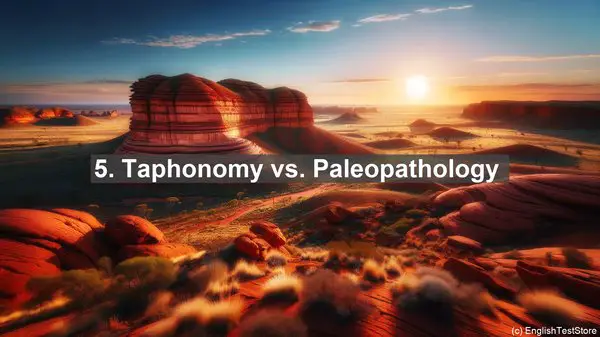Introduction to the World of Paleopathology
Welcome to this fascinating world of paleopathology. Today, we will be discussing the top 10 commonly confused words in this field. So, let’s dive right in!

1. Osteology vs. Paleopathology
First up, we have ‘osteology’ and ‘paleopathology.’ While both deal with the study of bones, osteology focuses on the structure and function of bones, whereas paleopathology examines ancient bones to understand diseases and health conditions.
2. Antemortem vs. Perimortem
Next, we have ‘antemortem’ and ‘perimortem.’ These terms are used to describe the timing of an injury or disease in relation to death. ‘Antemortem’ refers to events that occurred before death, while ‘perimortem’ refers to those that happened around the time of death.
3. Paleopathology vs. Forensic Pathology
Moving on, let’s clarify the difference between ‘paleopathology’ and ‘forensic pathology.’ While both involve the study of bones, paleopathology focuses on ancient remains, whereas forensic pathology deals with modern cases, often related to crime investigations.
4. Pathology vs. Paleopathology
Now, let’s differentiate between ‘pathology’ and ‘paleopathology.’ Pathology is the study of diseases in general, whereas paleopathology specifically looks at diseases in ancient populations.
5. Taphonomy vs. Paleopathology
Next, we have ‘taphonomy’ and ‘paleopathology.’ Taphonomy examines the processes that affect organic remains after death, such as decay and fossilization. In contrast, paleopathology focuses on the diseases and injuries found in those remains.
6. Lesion vs. Trauma
Moving on, let’s clarify the difference between ‘lesion’ and ‘trauma.’ A lesion refers to any abnormality or damage in a tissue or organ, while trauma specifically refers to an injury caused by an external force.
7. Endemic vs. Epidemic
Next, we have ‘endemic’ and ‘epidemic.’ An endemic disease is constantly present in a particular population or region, while an epidemic refers to a sudden increase in the number of cases, often affecting a larger area.

8. Artifact vs. Ecofact
Now, let’s differentiate between ‘artifact’ and ‘ecofact.’ An artifact is any object made or modified by humans, while an ecofact refers to organic remains, such as plant or animal remains, that provide information about the environment.
9. Excavation vs. Survey
Moving on, we have ‘excavation’ and ‘survey.’ Excavation involves the systematic digging and recovery of artifacts and ecofacts from a site, while a survey is a broader assessment of an area to identify potential sites.
10. Paleopathology vs. Bioarchaeology
Lastly, let’s clarify the difference between ‘paleopathology’ and ‘bioarchaeology.’ While both involve the study of human remains, paleopathology focuses on the diseases and health conditions, whereas bioarchaeology examines the broader aspects of human life, such as diet and lifestyle.
